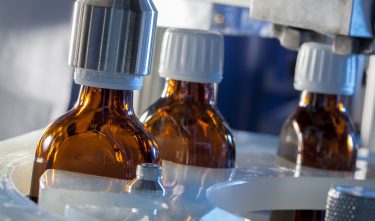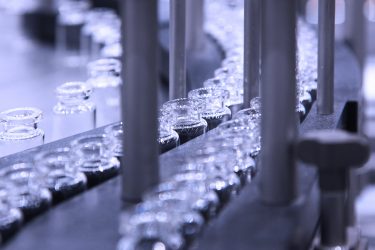Release of sterile medicinal products – looking at the focal points
Posted: 25 August 2020 | Tim Sandle (Bio Products Laboratory and University of Manchester) | 4 comments
There are numerous risks and regulatory requirements that must be considered to ensure appropriate contamination control of sterile medicinal products. Tim Sandle discusses the complexities of sterility assurance and provides guidance for manufacturers to ensure that appropriate risk management processes are in place.


STERILE PRODUCTS manufacturing has the added complexity that the final product needs to be sterile (absent of viable microorganisms and microbial by-products, such as bacterial endotoxin). Especially given that sterility cannot be conclusively tested (the sterility test, while mandatory of aseptically filled products and some terminally sterilised products is inherently flawed; not least because not all microorganisms in the environment are culturable and there is no universal means to grow them). Therefore, there is reliance upon a robust sterility assurance system. The person tasked with batch release must be aware of the risks centred on the release of contaminated product to the market and associated risks of patient harm.
With sterile products, there are three main types:1 parenteral dosage forms, ophthalmic dosage forms and aqueous inhalations; two main methods of production: terminal sterilisation and aseptic filling; plus, different presentations: glass ampoules and vials, pre-filled syringes, plastic ampoules and vials, and plastic bags.
One factor that all sterile product manufacturing processes have in common is their high level of risk, because the consequences of control failure could lead to patient harm. To reduce this risk, strong controls of the cleanroom environment, personnel practices and procedures, equipment and component sterilisation are required.
This article looks at some of the focal points required for the quality assurance assessment of sterile products. This is a large subject area and one where additional variations are introduced, according to product types, meaning that only broad themes can be discussed. Two of the central themes underpinning sterility assurance are a science-based holistic contamination control strategy and a mature quality culture that places proactive risk assessment at the forefront.
Who releases batches?
The person tasked with batch release must be aware of the risks centred on the release of contaminated product to the market and associated risks of patient harm”
Compared to other parts of the world, Europe has a different system in place for batch release; a Qualified Person completes the batch review process, whereas in the US it is often the Head of Quality Control and in other territories the batch review and release process is conducted by a pharmacist. However, regardless of which release process is conducted, for sterile product there are two streams to assess: drug efficacy (not examined in this article) and the probability of sterility.
With sterility, there are three key requirements for sterile medicinal products: 1) the product must be sterile, 2) the product must be apyrogenic and 3) the product must be free from visible particulates.
While the above factors can be supported by a degree of testing, no test is entirely conclusive. Therefore, risk-based process design and credible validation processes need to be in place, and these must be central to the sterility assurance system.
At all times during the release process, it should be borne in mind that:2
- sterility is an unnatural and transitory condition
- for a sterile pharmaceutical preparation to remain sterile it must be protected from the external non-sterile environment by isolation within a container which is impermeable to microorganisms, and
- the sterile condition is placed at risk as soon as the container is breached on purpose (eg, needle through the container) or by accident (eg, cracked vial).
Sterility assurance
The term “sterility assurance” is a combination of two words with the following definitions:3
- sterility – a state of being free from viable microorganisms
- assurance – a positive declaration intended to give confidence.
Sterility assurance concerns the wider embracement of the aspects of good manufacturing practice (GMP). The term is not synonymous with the ‘sterility assurance level’ (which enables a quantitative determination of the probability of a non-sterile unit relative to a sterilisation process), although the reduction of the two concepts is, unfortunately, too common.
Strong controls of the cleanroom environment, personnel practices and procedures, equipment and component sterilisation are required”
While all sterile products carry a degree of risk, there is a relative difference in risk between terminal sterilisation and aseptic processing. Of these two types of manufacturing, terminal sterilisation is favoured by regulators and can be quantitatively assessed through the sterility assurance level. Aseptic filling carries a greater risk; the process involves bringing together a sterile product and a sterile container and closure. Furthermore, the process cannot be quantitatively demonstrated, although some supporting data relating to process robustness can be obtained from media simulation trials.
There are two aspects central to ensuring that a robust sterility assurance system is in place: a contamination control strategy and a quality risk management approach. The contamination control strategy needs to take the form of a detailed, facility-specific document. In order to be effective, the strategy needs to be an approach that can assess seemingly isolated contamination events holistically and can put appropriate corrective and preventive actions (CAPA) in place. The main elements of such a control strategy are:4
- design of both the plant and process
- equipment and facilities
- personnel – training and gowning
- utilities – control and maintenance, such as pharmaceutical water systems and cleanroom air supply
- raw materials control – including in- process controls
- product containers and closures
- vendor approval – such as key component suppliers, sterilisation of components and single-use systems and services
- for outsourced services, such as sterilisation, sufficient evidence should be provided to the contract giver to ensure the process is operating correctly
- process risk assessment, especially in response to impending maintenance works
- process validation
- preventative maintenance – maintaining equipment and premises (planned and unplanned maintenance) to a standard that will not add significant risk of contamination
- cleaning and disinfection of equipment and cleanrooms
- monitoring systems – including an assessment of the feasibility of the introduction of scientifically sound, modern methods that optimise the detection of environmental contamination (as demonstrated through the environmental monitoring programme)
- prevention – trending, investigations, CAPA, root cause determination and the need for more robust investigational tools
- continuous improvement based on information from the above systems.
Risk management is essential for a modern pharmaceutical manufacturing facility. The management process should ensure that scientifically sound systems are employed, using reliable risk assessment tools and procedures. Where possible, the application of risk assessment should be proactive so that potential hazards are identified and appropriately mitigated ahead of each manufacturing stage taking place, although there are occasions when these evaluations need to be undertaken retrospectively.5 Key concepts for risk assessment, whether quantitative or qualitive methodology are deployed, are the severity of an event (such as ‘what might happen should microbial contamination occur?’) and the likelihood of an event happening (such as ‘what are the chances of microbial contamination occurring?’, for example through an extended process hold time). Detection, which is frequently added to many risk assessment schemas, should be used sparingly given the limitations of many methods (especially culture-based ones) to detect microbial contamination.


General elements for batch review
There are several elements pertaining to batch review that need to be examined, including best documentation practices like records being complete, calculations having been performed correctly and that signatures are in place. Checks must extend to assessing that batch processing limits have been met and that deviations are identified where they have not. It is also important to look wider and consider any other batches that might be implicated from the cited error. There will be a range of factors relating to specific products, such as drug potency.6
Assessing product-related data
Tests will be conducted as the product is being manufactured, from incoming raw materials to buffers. Bioburden tests will be conducted on the product as it is manufactured, with the final bioburden test – be that a sample of the bulk prior to sterile filtration in the case of aseptic processing or with representative final product articles prior to a terminal sterilisation process – being the most important. There will also be associated test data, such as an assessment of filter integrity, and a review of any sterilisation runs, for instance an assessment of autoclave cycles and the connected parameters.
Batch review is not just about reviewing compliance to good documentation practices”
In terms of examining samples from the batch as it is manufactured, each identified sample pertaining to each key manufacturing stage must be tested and the results compared to a specification. The assessment of test results ought to extend to the entire history of a finished product batch in accordance with appropriate procedures. In terms of assessing bioburden, there is an expectation that this decreases through the process, reaching the point where the final bioburden challenge is negligible and certainly below 10CFU/100mL.
Batch review is not just about reviewing compliance to good documentation practices (GDPs). Critical process parameters (CPPs) and critical quality attributes (CQAs) are also of great importance, associated to each product, these are assigned prior to manufacturing and relate to product licences.
According to ICH Q8:
- CQAs – a physical, chemical, biological or microbiological property or characteristic that should be within an appropriate limit, range or distribution to ensure the desired product quality.
It is useful to identify a CQA based on the severity of harm to a patient (safety and efficacy) resulting from failure to meet that quality attribute. An example, in the context of this article, is sterility. These attributes should be identified before considering risk control. - CPPs – a process parameter whose variability has an impact on a CQA and therefore should be monitored or controlled to ensure the process produces the desired quality.


Some facilities also elect to use:
- Critical material attributes (CMA) – a physical, chemical, biological or microbiological property or characteristic of an input material that should be within an appropriate limit, range or distribution to ensure the desired quality of output material.
Supporting information
As well as assessing what is written in the batch record, the person tasked with batch review should have the following knowledge and confidence that:8
- audit and self-inspection reports are available for the entire supply chain
- all changes have gone through change control and have been implemented successfully
- any repeat deviations have been assessed, including an understanding of why they have recurred
- there is satisfactory equipment calibration and maintenance status and there are no concerns in relation to equipment being operated outside of validated parameters
- training is up to date for all personnel engaged in GMP activities, including contractors
- the performance of key utilities (such as water, steam and gases are in control, including an assessment of trends)
- environmental parameters are in control, such as temperature and humidity
- environmental monitoring is satisfactory (viable and particle counts)
- documents are current, available and accurate.
Important areas to focus on include sterilisation and depyrogenation process records. Examples include confirmation that temperature readings have been completed and, for autoclaves, that the steam supplied was of the desired dryness value and that air removal was undertaken satisfactorily. Another important area relates to sterilising grade filters; an important compliance aspect of filtration is pore and integrity testing. Attention must also be paid to biodecontamination cycle efficacy, which is an important concern for processing in isolators, where gas concentration and dwell time need to be assessed.
There should be regular internal audits to assess the level of microbiological control and overall sterility assurance. Audits are used to:
- verify whether the facility has effective controls in place to assure the sterility of the product
- confirm that the plant has effective controls in place to assure a low product bioburden prior to sterilisation
- assess the suitability and effectiveness of instructions for sterilisation
- evaluate the suitability and effectiveness of associated contamination control measures, such as disinfectants
- gauge the effectiveness of personnel aseptic behaviours and techniques.
Understanding these features provides confidence that the pharmaceutical quality system is in control.
Final release
While all sterile products carry a degree of risk, there is a relative difference in risk between terminal sterilisation and aseptic processing”
The issuing of batch certification is a documented activity, with the formal recording of the finished product batch in a register. This confirms that the batch is both GMP compliant and in compliance with the marketing authorisation, ensuring each step in the manufacturing and testing process is in line with each required aspect of quality. The final part of the process involves moving the product to saleable stock, whereby the status of the batch is updated and leaves quarantine with the issuing of batch certification.
Summary
Sterile product manufacturing processes are vulnerable in relation to microbial and particulate contamination. Due to the limitation of both microbial methods and the size of samples that can be taken, the person assigned with batch review and consideration for release must be fully conversant with inherent contamination risks relating to the process and have an understanding of whether the product’s sterility has been compromised. This includes not only direct batch testing (such as in-process bioburden, filter integrity testing and the sterility test) but also a greater understanding of sterility assurance and being cognisant in relation to potential risk factors, such as poor facility design, poor quality culture, human misbehaviours and weaknesses around process controls.
About the author
Tim Sandle’s primary role is Head of Microbiology at Bio Products Laboratory, a sterile products manufacturer. In addition, he is a tutor with the School of Pharmacy and Pharmaceutical Sciences at the University of Manchester, for the university’s pharmaceutical microbiology MSc course, and a longstanding committee member of the pharmaceutical microbiology society, Pharmig.
References
- Sandle T. (2013). Sterility, Sterilisation and Sterility Assurance for Pharmaceuticals: Technology, Validation and Current Regulations, Woodhead Publishing Ltd.: Cambridge, UK
- Schroeder HG. (2005) Sterility failure analysis. PDA J. Pharm. Sci. Technol., 59 (2), 89 –95
- Tidswell E. “Sterility” in Saghee, M.R., Sandle, T. and Tidswell, E.C. (Eds.) (2011): Microbiology and Sterility Assurance in Pharmaceuticals and Medical Devices, New Delhi: Business Horizons, pp589-602
- Sandle T. (2017) Establishing a Contamination Control Strategy for Aseptic Processing, American Pharmaceutical Review, 20 (3): 22-28
- Curry W, Conway S, Goodfield C, Miller K, Mueller RL, Polini E. (2010) Reducing the risk of contamination of sterile parenteral products via ready-to-use closure components, AAPS PharmSciTech.;11(4):1572-9
- Schniepp S. (2017) “A Look at Batch Record Review,” Pharmaceutical Technology 41 (8)
- Sandle T. (2013) Sterility Testing of Pharmaceutical Products, PDA / DHI, River Grove, IL, USA
- Kolluru LP. (2017) Sterility Assurance of Parenteral Products–Major Deficiency for Recall. J Pharmacovigil 5: e168










Hi,
Can I repost your article on the social affinity blog beBee?
Thanking you in anticipation.
To repost the article you will need to acquire reprint rights, to get these please follow the ‘Permission to reuse our content’ tab at the bottom of the website home page.
Hi Syed, thank you for the comment.
A very succinct explanation of the requirements to release a sterile products. Excellent!